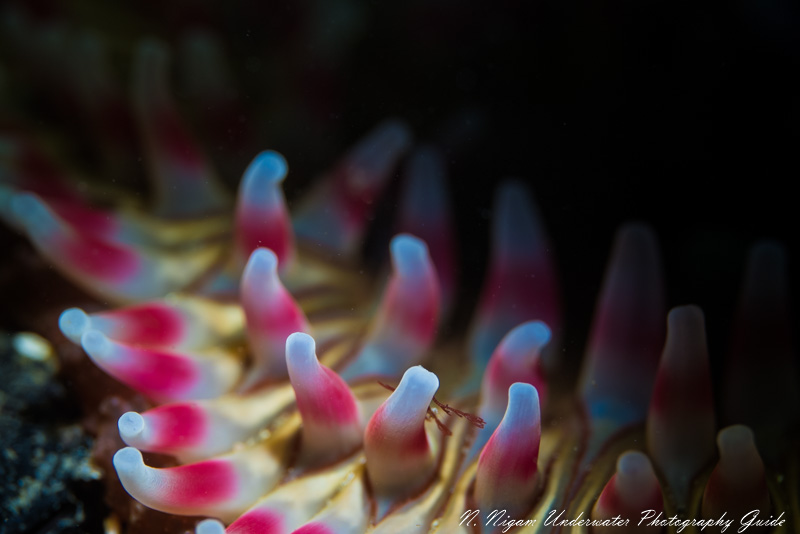The Hidden Bokeh Benefit of Snoot Photography

Snoots are versatile tools for underwater photography that allow photographers to isolate their subjects with a dramatic flare. A snoot is a tool that is placed over the head of your strobe or video light that condenses or isolates the light output into a small shape. This allows you to place light only on your subject without light getting into the background of the image. Often using a snoot will result in a nice black background that many photographers crave. However, there is an important aspect to snoot photography that is often overlooked - depth of field and bokeh (i.e., the blurred area of an image).
Traditional Black Backgrounds
Traditionally, black backgrounds are created by shooting with strobes at a high shutter speed and small aperture. If there is enough negative space behind the subject, this results in a black background. But because you need to shoot at a high f-stop to remove ambient light in the image, black background images almost always have a deep depth of field. This means most of the image is in focus and there is not much of an artistic blur. Photographers that like a lot of bokeh are limited in their options.
Better Bokeh with Snoots
But when you bring a snoot into the mix, you no longer need to have a high f-stop as long as you shoot at a high shutter speed. This means you can get much more bokeh in your images without compromising that dark background! Some might scoff at this suggestion, as snoot photography eliminates black backgrounds anyway. But if you shoot at a small enough f-stop, you should be able to get parts of the image that are lit by the snoot also out of focus with a buttery bokeh. This is easier with a full-frame camera as full-frame sensors produce shallower depth of field.
The Snoot-Bokeh Test
While testing the Sony A7S III, we did a quick bokeh test with an anemone and a ReefNet fiber optic snoot. We shot these photos with a Sigma 105mm macro lens, Sony A7S III, and a reefnet fiber optic snoot. All photos were taken at 1/160 sec @ ISO 200. The f-stop is written under each photo.
f/20
f/9
f/5
f/2.8
Verdict?
Adjusting your depth of field while shooting with a snoot is a subtle yet effective way to adjust the disposition of an image. Want a mysterious and artsy look? Shoot at a low f-stop. Want a striking, detailed image? Go for the high f-stop. Play around with it! You'll be surprised with what you come up with.
RECOMMENDED ARTICLES
SUPPORT THE UNDERWATER PHOTOGRAPHY GUIDE:
The Best Service & Prices on u/w Photo Gear
 Visit Bluewater Photo & Video for all your underwater photography and video gear. Click, or call the team at (310) 633-5052 for expert advice!
Visit Bluewater Photo & Video for all your underwater photography and video gear. Click, or call the team at (310) 633-5052 for expert advice!
The Best Pricing, Service & Expert Advice to Book your Dive Trips
 Bluewater Travel is your full-service scuba travel agency. Let our expert advisers plan and book your next dive vacation. Run by divers, for divers.
Bluewater Travel is your full-service scuba travel agency. Let our expert advisers plan and book your next dive vacation. Run by divers, for divers.





.JPG)
.JPG)

.JPG)





























